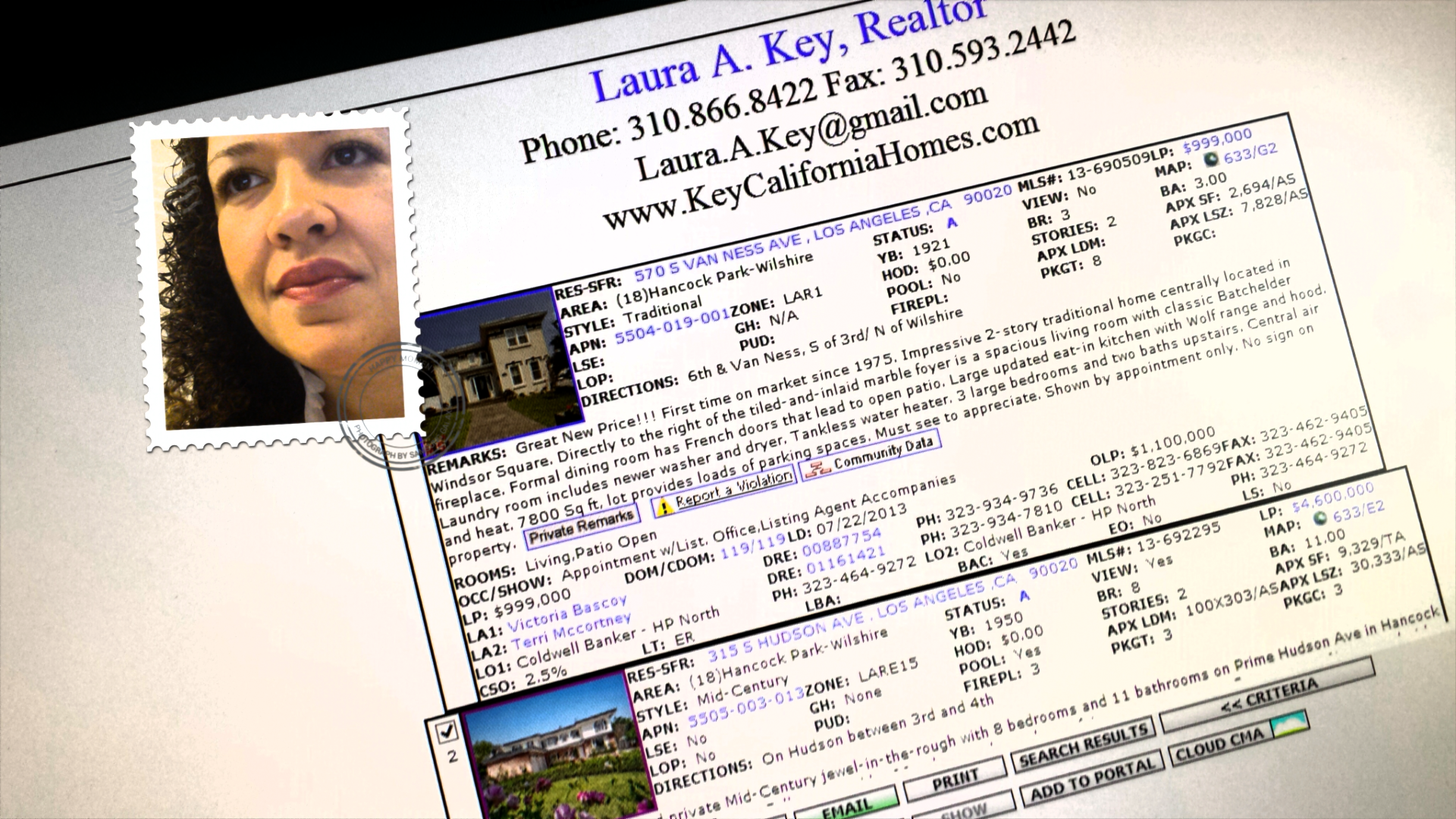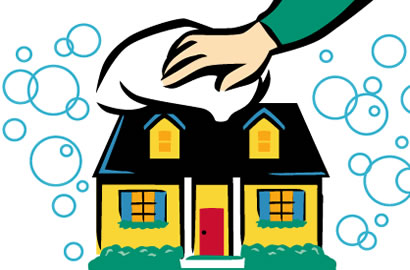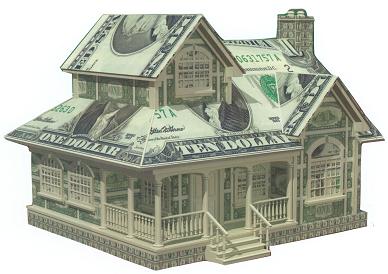Getting rid of your stuff can be difficult. Things have value to you, whether you've formed a personal attachment to your stuff or you believe you'll have a practical use for it... someday. Most of the time, "personal value" means guilt and "someday" never comes.
We're not talking about going ultra-minimalist here, but rather making a concentrated effort to only keep the things in your life that you use and actually matter to you. To do this, we're first going to take a look at identifying the crap in your home, then how to get rid of it so you're not always just throwing it away, and finally discuss some methods for actually maintaining your crap-free lifestyle. Let's get to it.
Identify the Crap
Some crap is easy to identify, like a corporate t-shirt that's several sizes too big and you forgot about its existence, or that birthday card from 1994 that you're afraid your grandmother will ask about next time she visits. If you still have any of this kind of stuff, stop reading this post and go out into the yard and burn it. (Don't actually do this—it's illegal.) Now that you've gotten rid of your easily identifiable crap, we can start working on the rest—deciding what can stay and what can go.
Step 1: Sort It Out
First, you need to sort out your excess. Categorize the items you're sorting through so you can concentrate on each separately. These categories should include things like books, clothing, cables, and gadgets. They can even be more specific, if you have a hobby hording problem. For example, puzzles and board games, photo albums, and sports equipment are all examples of potentially less-common things that can easily build up in your home. If you notice anything taking up just a little too much space, it needs to be a category on your list.
With each category, sort every item into one of three piles: the stuff you're going to keep, the stuff you're going to get rid of, and the stuff you're not sure about. Be ruthless: When's the last time you used that bulky electric juicer? What are the chances you're going to start using it in the future? Is it really worth keeping around?
When you're done sorting, go through the pile of items you're not sure about and try to get rid of about half of it. One simple decision-making factor: find similar items and pick the one you like the best, get rid of the rest.
Now that you've made a mess of your home by tossing your stuff into piles on the floor, it's time to put it all back again. First put the stuff you're getting rid of in a cardboard box, trash bag, or whatever you prefer so long as it's clearly moving on to its next life. Next, put all the stuff you're keeping back where it belongs and admire all the new, empty space you've created. Last, grab all the things you're not sure about and put them somewhere separate. If you're hanging clothes, hang these items in another area of a closet or place them in a separate drawer. Do not keep them with the stuff you're sure you want to keep. Keep track of whether or not you use any of them over the next 30 days. If you do, you can put it back with the stuff you want to keep. If you don't, you're getting rid of it when the 30 days are up.
Step 2: Repeat Step One
No, not right away. You've just had to part with a bunch of things you think you care about, so you're clearly not in the emotional state to handle another tumultuous breakup with your possessions. Wait 30 days and repeat the process. After a month, when time has healed your wounds, you'll find it much easier to let go of even more things you don't need. You might even like it. It's nice having more space in your home, and once you realize 1) that you like it and 2) you don't miss anything you tossed, you'll have a much easier time getting rid of more things you don't need.
Step 3: Remove the One-Offs
By the time you've made it to this final step, you've probably gotten rid of most of your unnecessary crap. What's left are the things you don't have too much of but still find taking up unnecessary space in your home. Do you have an electric guitar you never play because you said you'd take lessons four years ago but never got around to it? Identify anything like that guitar and mark it for deletion. In the next section, we're going to look at the best options you have for actually getting rid of all the stuff you identified in these three steps.
Get Rid of the Crap
When you're getting rid of your things, you have a couple of options. Obviously you can throw things away, but if you have anything in good condition you can also sell it or donate it. Some specific items may also find a new life in the digital world, or you may have friends who want some of your things. In this section we're going to take a look at the best ways to finally let go.
Donate to the Needy (or Not-So-Needy)
Donating is the easiest way to throw your crap away without actually doing that. Finding your local Salvation Army or Goodwill is a fine way to start. Additionally, if there's a particular cause you're passionate about you can often find organizations that will take some of your things. A quick web search will usually turn up a few local options, so search for a cause if you want to help in a more-specific way.
If you just hate doing good and helping other people is too selfless, you can always win favor with your friends by giving them your potentially useful-to-them crap. Every friend wants to get a call asking them if they want an old pair of gym shorts or your extra copy of Serial Mom on DVD. Sometimes you will have some things your friends can benefit from, so don't hesitate to set them aside to ask. If they don't want them, you can always just suck it up, be a good person, and donate to someone in need who has yet to experience Serial Mom while wearing your old gym shorts.
Sell, Sell, Sell
If you're going to sell your stuff, the most obvious option is to use Craigslist and/or eBay. You'll want to use Craigslist for things like furniture or larger items you won't want to ship. You may also prefer to sell your gadgets and other technology there as well, especially if you don't have the box. eBay is always an option, but it's not as good of market as it once was for this kind of sell-off.
In addition to the obvious, you have Amazon and Gazelle for certain items in your inventory. First, Amazon will buy your old electronics for money to spend at Amazon. Additionally, a service called Fulfilled by Amazon can make the process of selling through the retail giant much less work. Fulfilled by Amazon is a service that lets you drop ship your stuff to Amazon, who then lists it on their product pages, ships out the items for you just like the item was purchased from them directly, and deposits the money from the sale in your checking account (after taking their commission, of course). You still have to add all the items to your inventory yourself, but if you're getting rid of a lot of stuff this is a huge time-saver and doesn't cost much more than if you did all the hard work. While you won't be able to get rid of everything this way, as the sock puppet you made in 2nd grade isn't a currently listed product, you can sell quite a few of your possessions and make a fair amount of pocket change in the process.
If you want to do even less work, and you have a lot of technology to get rid of, Gazelle is a good option. Because their site is geared towards selling your gear, it's very easy to search for what you want to get rid of, specify the condition, and get a quick quote. It's also pretty easy to find a Gazelle coupon that will get you an extra 5%. If you're really lazy, Gazelle will send you a box and pick it up so you can continue your life in solitude with minimal interruption.
Amazon and Gazelle are both great options if you want to save yourself some time, but if you want to put in the effort to make as much money as possible then be sure to read our guide to selling your gadgets for more tips.
Go Digital
A lot of the crap you have in your home can fit on a hard drive if you're willing to put in the effort (or pay someone to put in said effort for you). If you have old items you want to keep but would be willing to toss if you had a digital version, you should read out guide on digitzing your life. Nothing saves space like getting rid of stacks of photos, old VHS tapes, and other stuff with your worst enemy: sentimental value.
Throw It Away
This is really easy, because you may already have it in a trash bag. Take that bag to the curb, toss it in a nearby dumpster, or just feed it to the monster that lives under you bed. Actually, throwing things away is not always so easy if you want to do it as safely as possible. Your technology, for example, doesn't sit so well when buried in the planet. If it's something you can recycle, take the effort to recycle it. Or don't. Sites like Gazelle will take your dead technology off your hands, and you can find recycling centers at both the EPA and Earth911.
Maintain Your Crap-Free Existence
Congratulations. If you've made it here, your home is crap free. If you just skipped to this section without doing anything, that congratulations is rescinded—but your curiosity is commendable. It's a huge accomplishment to de-crapify your entire home, but all that effort is wasted if you can't maintain a crap-free lifestyle. For that, you need some rules, policies, and tricks to ward off the excess stuff that once plagued your life.
You may have heard that you should toss it if you haven't used it in the last year. This is true, but that's a very reasonable attitude to take with your stuff. If you have a tendency to keep things you don't need, you need policies a bit more strict and timely than that. Live by these instead:
- When you get something new, you have to get rid of something old. It doesn't have to be the same type of item, but it should take up approximately the same amount of space (or more).
- Set an expiration date on anything you notice you haven't used in awhile. So you remember, set a reminder on your calendar or put a post-it note on that item with an expiration date. If you see it again and that date has passed, it's time to let it go.
- Don't buy anything new until you've considered whether or not you need it for 48 hours. (Obvious exceptions include more urgent things like broccoli, hemorrhoid cream, and tickets to the midnight screening of the next big disappointing comic book film.)
- Get organized in ways that help you better use everything you still have. Organize your refrigerator like a supermarket. Organize your kitchen like a programmer. Organize your clothing by color, like in a clothing store, so it's easy to find what you're looking for. You get the idea.
Cleaning can be hard when it means getting rid of things you've come to love over the years, but chances are you'll come to love the extra space even more. Hopefully this guide will help you get your crap under control and out of your home. If you have any great de-crapifying suggestions of your home, be sure to share them in the comments.
Source: lifehacker.com; Article written by: Adam Dachis
Get the most for your home! The cleaner, more organized, less cluttered houses on the market get the buyers! Call me today and let's get started with your plan! Laura Key 310.866.8422







 Call Me for More Details 310.866.8422
Call Me for More Details 310.866.8422











